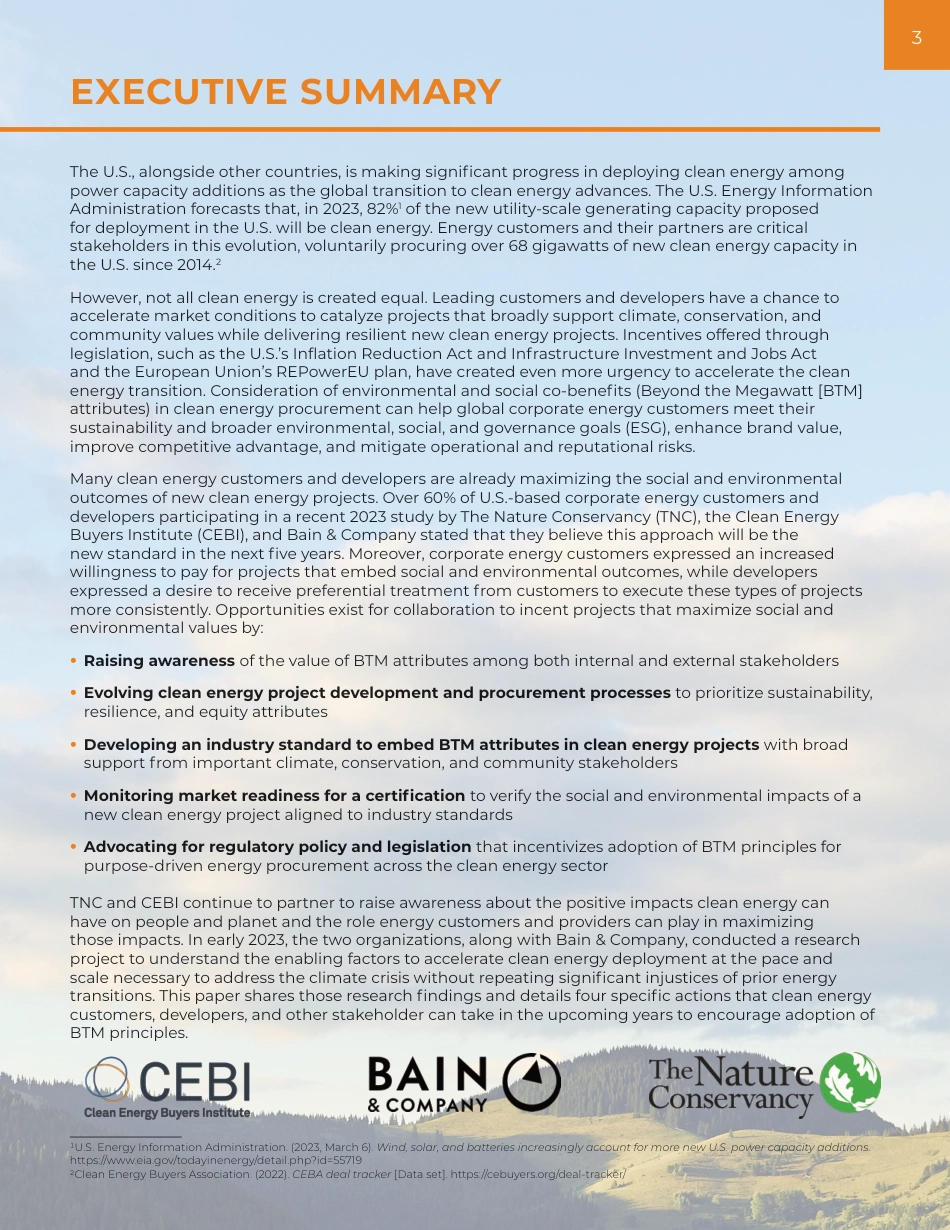BEYOND THE MEGAWATTOPTIMIZING IMPACT OF CLEAN ENERGY PROCUREMENT:Growing Demand for Social and Environmental Outcomes AUGUST 2023 TABLE OF CONTENTS3 Executive Summary 4 Acknowledgments 4 Note from authors 5 Introduction 6 Defining noncommercial criteria 8 Value of BTM attributes to energy customers 10 State of the energy-customer-led clean energy transition 11 Are companies interested in BTM attributes?15 Are developers interested in BTM attributes? 17 Which BTM attributes are critical to customers and developers18 Recommendations 22 Closing remarks 23 Appendix 24 Glossary 3EXECUTIVE SUMMARYThe U.S., alongside other countries, is making significant progress in deploying clean energy among power capacity additions as the global transition to clean energy advances. The U.S. Energy Information Administration forecasts that, in 2023, 82%1 of the new utility-scale generating capacity proposed for deployment in the U.S. will be clean energy. Energy customers and their partners are critical stakeholders in this evolution, voluntarily procuring over 68 gigawatts of new clean energy capacity in the U.S. since 2014.2However, not all clean energy is created equal. Leading customers and developers have a chance to accelerate market conditions to catalyze projects that broadly support climate, conservation, and community values while delivering resilient new clean energy projects. Incentives offered through legislation, such as the U.S.’s Inflation Reduction Act and Infrastructure Investment and Jobs Act and the European Union’s REPowerEU plan, have created even more urgency to accelerate the clean energy transition. Consideration of environmental and social co-benefits (Beyond the Megawatt [BTM] attributes) in clean energy procurement...



